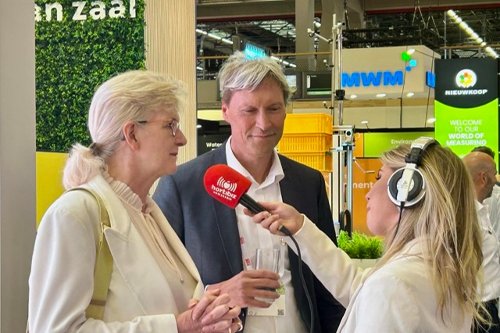Five reasons why you should invest in a VF
Added on 05 December 2023

Getting the most from investing in planet-friendly, scalable technology
We’re often asked by both investors and growers – why invest in vertical farming? As vertical farming technology providers (who have been in the industry for over ten years), we've seen investors dip their toes into the industry looking for both a responsible and sustainable investment. Vertical farming ticks both of those boxes and – when done right – has the potential forfar greater yields (and in turn ROI) than other forms of agriculture, such as greenhouse or open-field farming.
As well as the sheer flexibility an IGS vertical farm affords (they can be used by everyone from propagators and large-scale growers, to entrepreneurs and pharmaceutical companies), vertical farming has numerous environmental benefits.
At IGS, we make vertical farming technology optimised for resource efficiency – our ebb and flood system makes sure crops get the exact amount of water and nutrients needed, recycling any excess through the fertigation system to help reduce water use. This is just one step we take to ensure investors a profitable, sustainable, and scalable operation when using our Growth Towers.
Aside from the range of use and environmental benefits, there are many other reasons to invest in vertical farming, such as greater food security, scalability, and the ability to safeguard against energy price hikes, amongst others. We’ve broken them down one by one, so you’ve got all the facts you need to invest sensibly.
1 - Weather the effects of climate change
Extreme weather now appears inextricably linked to lower yields, and consequently, crop shortages, presenting the agricultural industry with serious challenges to assess. Prominent crop-producing nations worldwide are forecasting lower yields for 2023/24 due to prolonged heatwaves and heavy rainfall, decimating produce. This can be seen in nations typically known for their leafy greens, such as Italy, Greece, and Spain. 2023 also saw the hottest summer on record (July was the hottest since records began), and, if we’re to protect the future of agriculture, we need to think about how to weather the storm. Vertical farming can help.
At IGS, we use Total Control Environment Agriculture (TCEA) to create the perfect growing environment, 365 days a year. Through TCEA, growers can control temperature, light, humidity, irrigation, nutrition, and even air composition. This enables them to produce up to 20 harvests of basil per annum – roughly 3 times more than glasshouse production, and 10 times more than open field.
2 - Safeguard against supply chain shortages and energy price hikes
For several years, we’ve been dealing with the aftereffects of colossal global issues. The Covid pandemic wreaked havoc with supply chains, weakening food supply chains across the world. This has since been exasperated by the war in Ukraine, and the consequences can be seen in many of our energy and fuel bills. Luckily, it’s easy to safeguard against high prices and power a vertical farm using renewable energy, which can help to significantly lower operating costs.
Investing in a vertical farm also presents an opportunity for renewable energy producers. It allows them to invest in a long-term direct-wire contract, and also to receive a greater price per kWh than selling on the wider grid. It also enables them to be part of the circular economy and effectively removes the middleman when selling energy.
At IGS, our Growth Towers use approximately 1/3 of the electricity consumed by other vertical farms. This makes for more efficient crop production, and ensures that any penny spent on electricity is spent wisely.
More news















